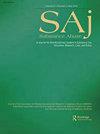Perceived Impact of Covid-19 on Prevention, Treatment, Harm Reduction, and Recovery Services for Opioid Use Disorder: National Survey of Local Health Departments
IF 2.4
3区 医学
Q2 SUBSTANCE ABUSE
引用次数: 3
Abstract
Background: US local health departments (LHDs) have faced the COVID-19 pandemic and the opioid epidemic simultaneously. This article investigates the perceived impact of COVID-19 on the continuation of locally available services for addressing opioid use disorder (OUD). Methods: A national survey of US LHDs was conducted from November to December 2020. The survey asked key personnel in LHDs about the availability of OUD services in their jurisdiction, and how COVID-19 impacted such availability (i.e., whether terminated or continued at a reduced, the same, or an increased level after the arrival of COVID-19). Proportions for each impact category were estimated for prevention, treatment, harm reduction, and recovery services. Logistic regression tested for rural-urban and regional differences in perceived service impact. Results: An 11.4% (214 out of 1873) response rate was attained. Of the returned surveys, 187 were used in the analysis. Reported terminations were generally low, especially for treatment services. School-based prevention initiatives had the highest termination rate (17.2%, 95% CI = 11.4–25.1%). Prevention services had the highest proportions for continuing at a reduced level, except for recovery mutual help programs (53.9%, 95% CI = 45.2–62.4%). LHDs reported continuing services at an increased level at a higher frequency than terminating. Notably, 72.2% (95% CI = 62.7–80.0%) continued telehealth/telemedicine options for OUD at an increased level, and 23.8% (95% CI = 17.8–31.1%) and 10.0% (95% CI = 5.7–16.7%) reported doing the same for naloxone distribution and medications for opioid use disorder (MOUD), respectively. More harm reduction services were continued at the same versus at a reduced level. Service continuation differed little between rural-urban LHDs or by region. Conclusions: The impacts of COVID-19 on OUD service availability in LHD jurisdictions may depend on the specific area of opioid response while the long-term consequences of these changes remain unknown.新冠肺炎对阿片类药物使用障碍预防、治疗、减少危害和康复服务的感知影响:地方卫生部门的全国调查
背景:美国地方卫生部门(LHD)同时面临新冠肺炎疫情和阿片类药物疫情。本文调查了新冠肺炎对继续提供本地可用服务以解决阿片类药物使用障碍(OUD)的感知影响。方法:于2020年11月至12月对美国大型强子对撞机进行了一项全国性调查。该调查询问了LHD的关键人员其管辖范围内OUD服务的可用性,以及新冠肺炎如何影响此类可用性(即,在新冠肺炎到来后,是否以减少、相同或增加的水平终止或继续)。对预防、治疗、减少伤害和恢复服务的每个影响类别的比例进行了估计。Logistic回归检验了感知服务影响的城乡和地区差异。结果:有效率为11.4%(1873例中有214例)。在返回的调查中,187项用于分析。报告的终止妊娠率普遍较低,尤其是在治疗服务方面。学校预防措施的终止率最高(17.2%,95%CI=11.4-25.1%)。预防服务在减少水平下继续的比例最高,但康复互助计划除外(53.9%,95%CI=45.2-62.4%)。LHD报告称,继续服务的水平增加,频率高于终止服务。值得注意的是,72.2%(95%置信区间=62.7-80.0%)的患者继续接受远程医疗/远程医疗治疗,治疗OUD的水平有所提高,23.8%(95%置信度=17.8-31.1%)和10.0%(95%置信指数=5.7-16.7%)的报告分别对纳洛酮的分配和阿片类药物使用障碍(MOUD)的药物使用进行了同样的治疗。与降低水平相比,更多的减少伤害服务仍在继续。农村和城市大型强子对撞机之间或不同地区之间的服务持续性差异不大。结论:新冠肺炎对LHD管辖区OUD服务可用性的影响可能取决于阿片类药物反应的具体领域,而这些变化的长期后果尚不清楚。
本文章由计算机程序翻译,如有差异,请以英文原文为准。
求助全文
约1分钟内获得全文
求助全文
来源期刊

Substance abuse
SUBSTANCE ABUSE-
CiteScore
5.90
自引率
2.90%
发文量
88
审稿时长
>12 weeks
期刊介绍:
Now in its 4th decade of publication, Substance Abuse journal is a peer-reviewed journal that serves as the official publication of Association for Medical Education and Research in Substance Abuse (AMERSA) in association with The International Society of Addiction Medicine (ISAM) and the International Coalition for Addiction Studies in Education (INCASE). Substance Abuse journal offers wide-ranging coverage for healthcare professionals, addiction specialists and others engaged in research, education, clinical care, and service delivery and evaluation. It features articles on a variety of topics, including:
Interdisciplinary addiction research, education, and treatment
Clinical trial, epidemiology, health services, and translation addiction research
Implementation science related to addiction
Innovations and subsequent outcomes in addiction education
Addiction policy and opinion
International addiction topics
Clinical care regarding addictions.
 求助内容:
求助内容: 应助结果提醒方式:
应助结果提醒方式:


